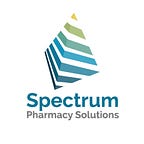Pharmacy Benefit Managers: What You Don’t Know
The primary goal of a Pharmacy Benefit Manager (PBM) is to contain rising prescription drug costs and ensure that patients are taking the correct or most effective drugs, not unnecessary, abusive ones. or dangerous. In a sense, they are a middleman for the middleman. Why are they necessary or beneficial?
To give some perspective in picking a single disease, the annual cost of diagnosed diabetes in the United States is $327 billion. A pharmacy benefits manager can generate savings based on their breadth, ability to negotiate with drug manufacturers, and outstanding clinical programs that truly benefit customers. If you are a company that self-finances your health insurance, you generally have the option of choosing your PBM. However, there are additional considerations to consider. These include integration with your TPA, access to clinical programs, formulary (broad or narrow), and financial transparency from your PBM partner.
PBMs have a strong profit motive
PBMs can generate profits in more than 30 different ways, many of which are not easily transparent. The most common methods that generate revenue are differential pricing, rebate capture, and administrative fees. With differential pricing, PBM makes a markup on the difference between what health plans pay PBM for prescription drugs and what PBM pays to the pharmacy dispensing the drugs. Rebates are manufacturer dollars given to PBM’s aftermarket. The third method is to pay a direct administrative fee.
In this basic setup, PBMs have a lot to gain financially where they can dictate the terms. And this contract is the key! It all follows. The contract includes: definitions, performance guarantees, indemnity wording, claims excluded from price guarantees, termination wording, and audit wording. PBMs do not underwrite the risk, they underwrite the terms of the contract!
I could probably provide a glossary for these terms, but I won’t now. (When I do, I’ll link to this article!)
Are they all the same? What are my options?
You can categorize PBMs into three groups: Traditional, Transparent, and Consortium. They are part of a continuum in terms of cost, service and visibility. I’ll give you an idea of each.
Traditional
The traditional model generally contains the elements described above: differential prices, discounts and administrative costs. The “carved” option is easy and simple. It is usually managed by a provider. It has the downsides of hidden cash flow, as well as a lack of transparency and control. However, it is easy and simple. And with a solid contract, you can still generate great results.
The “carved” option in a traditional setting usually includes one of the big prescription benefit plan providers like Express Scripts, Optum, Caremark, or Ingenio. It allows little or no control over form or mail order layouts. Little or no control over contract terms and definitions. Performance guarantees can be added and are common.
Transparent
That’s exactly what he says. Hidden PBM cash flows are eliminated in this model. PBM’s revenue is generated from administrative and distribution fees with full disclosure of each. There are comprehensive accounting and auditing provisions. These arrangements can typically offer better contract terms or the ability to manage definitions, flexibility in custom clinical programs, more detailed analysis, and greater transparency. This is the clearest cost.
Consortium
This is a newer option. These companies, such as NFP Benefits’ Rx Solutions or Rx Benefits, will add contracts with three of the major PBMs. Due to their scale/size, they can maximize discounts, reduce margin slightly and provide better service.
If you are a self-funded employer, the good news is that there are several options you can consider, assuming you have a TPA that allows you to forge PBM, as not all will allow it. If you’re in one of those two buckets, there’s a lot to consider. Employers and consultants consider the pros and cons of each solution, what fits the culture of the job, and what leads to the lowest net costs. Going forward, the nation and the government will face a future that continues to include high-priced orphan drugs, specialty drugs, and new gene therapy drugs. The newest are gene therapy drugs that range from treatment to completely cures for certain conditions. These drugs are just starting to hit the market and range in price from $500,000 to $2,100,000 per course of treatment.
A few high-profile cases have highlighted the complexities associated with some of these drugs. In the case of orphan drugs, the drug is originally known as “H.P. Acthar” is a good example. It was a drug that had been moved to the generic. A company bought the drug, found an off-label use to treat a rare infantile spasm, and went from a generic drug at less than $100/month to a prescription drug at $65,000/year. This story is not meant to be a sensationalist on the sidelines, but rather a point of view to understand the landscape.
There isn’t necessarily one right answer when choosing a PBM. There is a lot of information to consume and consider. It’s about digging, understanding the terms, negotiating and finding a solution that understands and meets your needs.
